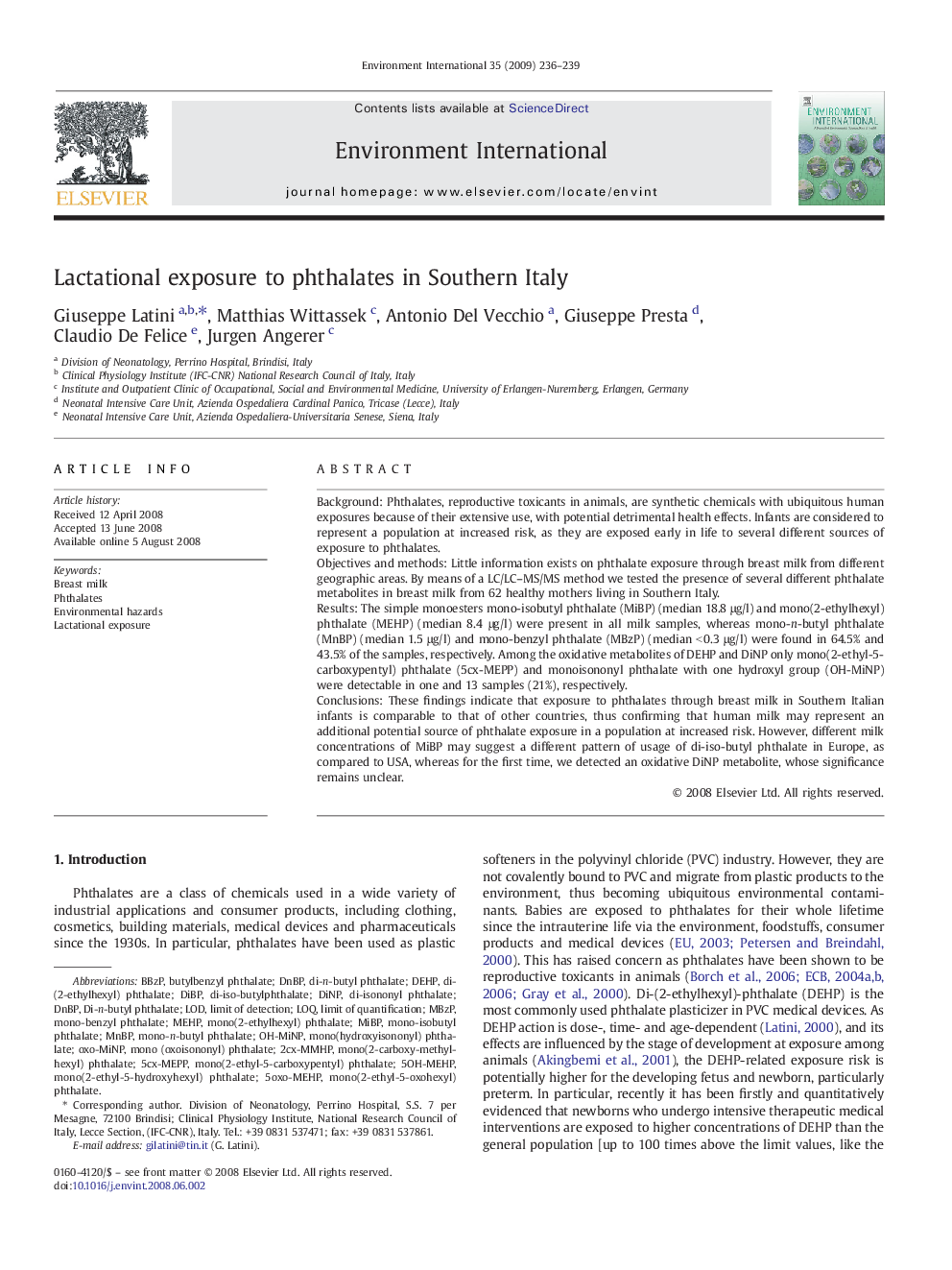| Article ID | Journal | Published Year | Pages | File Type |
|---|---|---|---|---|
| 4423649 | Environment International | 2009 | 4 Pages |
BackgroundPhthalates, reproductive toxicants in animals, are synthetic chemicals with ubiquitous human exposures because of their extensive use, with potential detrimental health effects. Infants are considered to represent a population at increased risk, as they are exposed early in life to several different sources of exposure to phthalates.Objectives and methodsLittle information exists on phthalate exposure through breast milk from different geographic areas. By means of a LC/LC–MS/MS method we tested the presence of several different phthalate metabolites in breast milk from 62 healthy mothers living in Southern Italy.ResultsThe simple monoesters mono-isobutyl phthalate (MiBP) (median 18.8 μg/l) and mono(2-ethylhexyl) phthalate (MEHP) (median 8.4 μg/l) were present in all milk samples, whereas mono-n-butyl phthalate (MnBP) (median 1.5 μg/l) and mono-benzyl phthalate (MBzP) (median < 0.3 μg/l) were found in 64.5% and 43.5% of the samples, respectively. Among the oxidative metabolites of DEHP and DiNP only mono(2-ethyl-5-carboxypentyl) phthalate (5cx-MEPP) and monoisononyl phthalate with one hydroxyl group (OH-MiNP) were detectable in one and 13 samples (21%), respectively.ConclusionsThese findings indicate that exposure to phthalates through breast milk in Southern Italian infants is comparable to that of other countries, thus confirming that human milk may represent an additional potential source of phthalate exposure in a population at increased risk. However, different milk concentrations of MiBP may suggest a different pattern of usage of di-iso-butyl phthalate in Europe, as compared to USA, whereas for the first time, we detected an oxidative DiNP metabolite, whose significance remains unclear.
